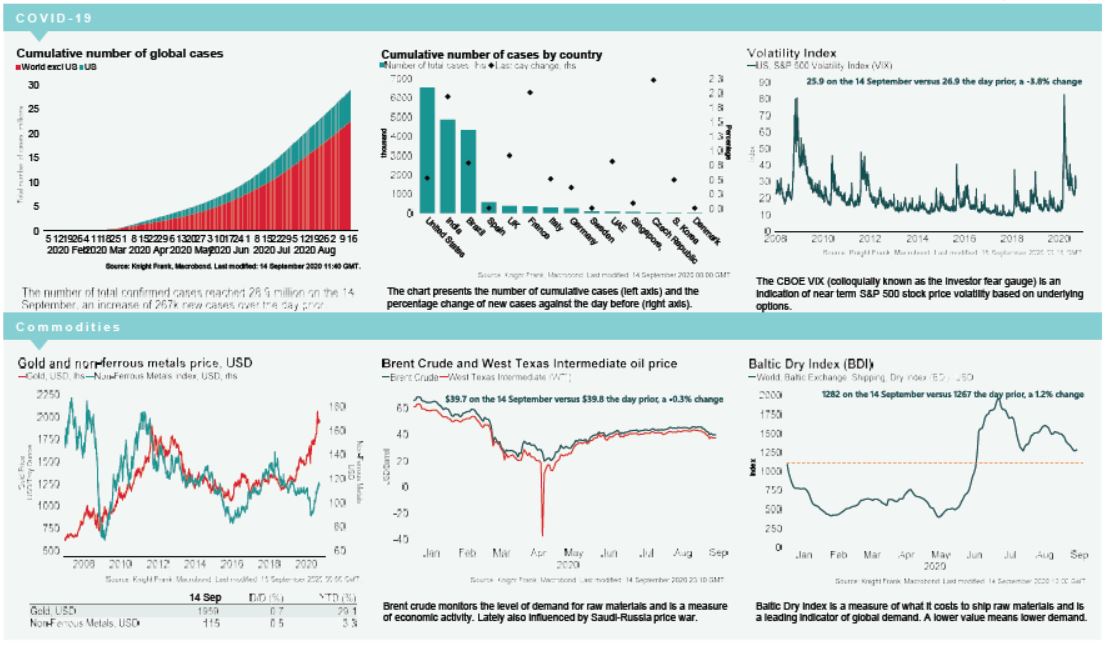Covid-19 Daily Dashboard - 15 September 2020
An overview of key economic and financial metrics.
2 minutes to read

Download an overview of key economic and financial metrics relating to Covid-19 on 15 September 2020.
Equities: In Europe, stocks are up, with the STOXX 600 +0.8% higher, both the FTSE 250 and the CAC 40 are up +0.4% and the DAX has added +0.3% over the morning. In Asia, the Topix (-0.6%) and the S&P / ASX (-0.1%) closed lower, while the CSI 300 (+0.8%), the Kospi (+0.6%) and the Hang Seng (+0.4%) were all higher on close. In the US, futures for the S&P 500 are up +0.3%.
VIX: After decreasing -3.8% yesterday, the CBOE market volatility index is down a further -1.1% this morning to 25.6. However, this remains elevated compared to its long term average (LTA) of 19.8. In Europe, the Euro Stoxx 50 volatility price index is down -3.0% to 21.9, below its LTA of 23.9.
Bonds: The UK 10-year gilt yield has softened +2bps to 0.22%, while both the German 10-year bund yield and the Italian 10-year bond yield have softened +1bp to -0.47% and 1.03%. The US 10-year treasury yield is flat at 0.67%.
Currency: Sterling has appreciated to $1.29 and the euro is currently $1.19. Hedging benefits for US dollar denominated investors into the UK and the eurozone are 0.31% and 1.11% per annum on a five-year basis.
Oil: Brent Crude is back above $40 per barrel after increasing +1.6% to $40.24. The West Texas Intermediate (WTI) has also increased over the morning, up +1.7% to $37.94 per barrel.
Baltic Dry: The Baltic Dry increased for the first time in 14 sessions yesterday, up +1.2% to 1,282. The index is now +18% higher than it was in January, albeit, it is still -34% down from the peak in July.
UK Unemployment: UK workers on payrolls have fallen -2.4% or by 695,000 in August compared to March 2020, according to the ONS. Overall, the unemployment rate in the three months to July was 4.1%, which is +0.3% higher than one year ago and up +0.2% compared to the quarter prior. However, the employment rate in the UK remained relatively stable, up +0.1% to 76.5% in the three months to July. The ONS estimate that there were more than 5 million people temporarily away from paid work in July, half of whom have been away for 3 months or more. Redundancies have risen by their steepest level since 2009 in the three months to July, up by 58,000 over the year and 48,000 compared to the quarter prior.